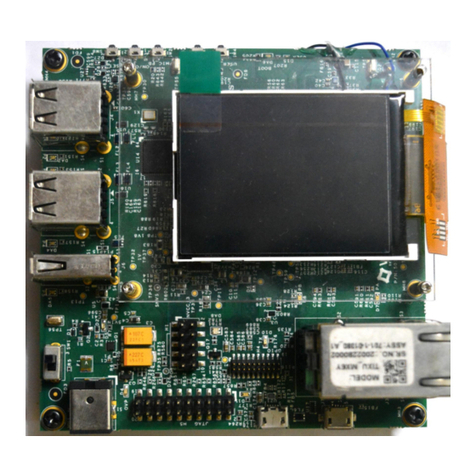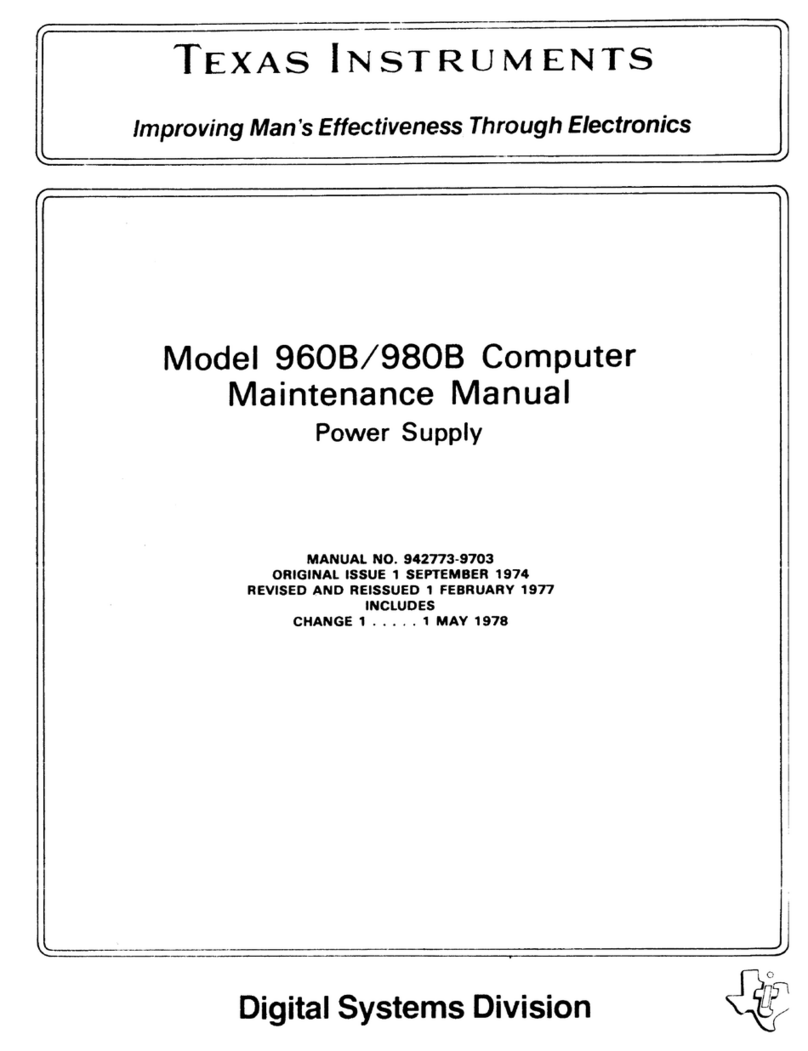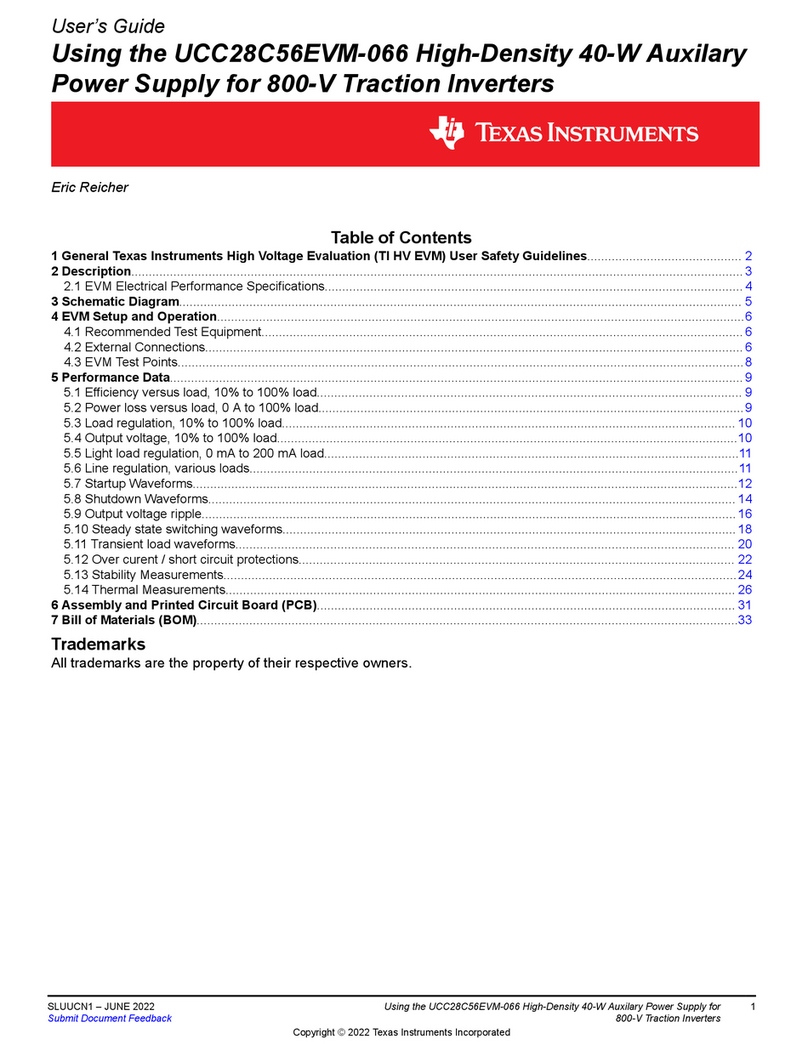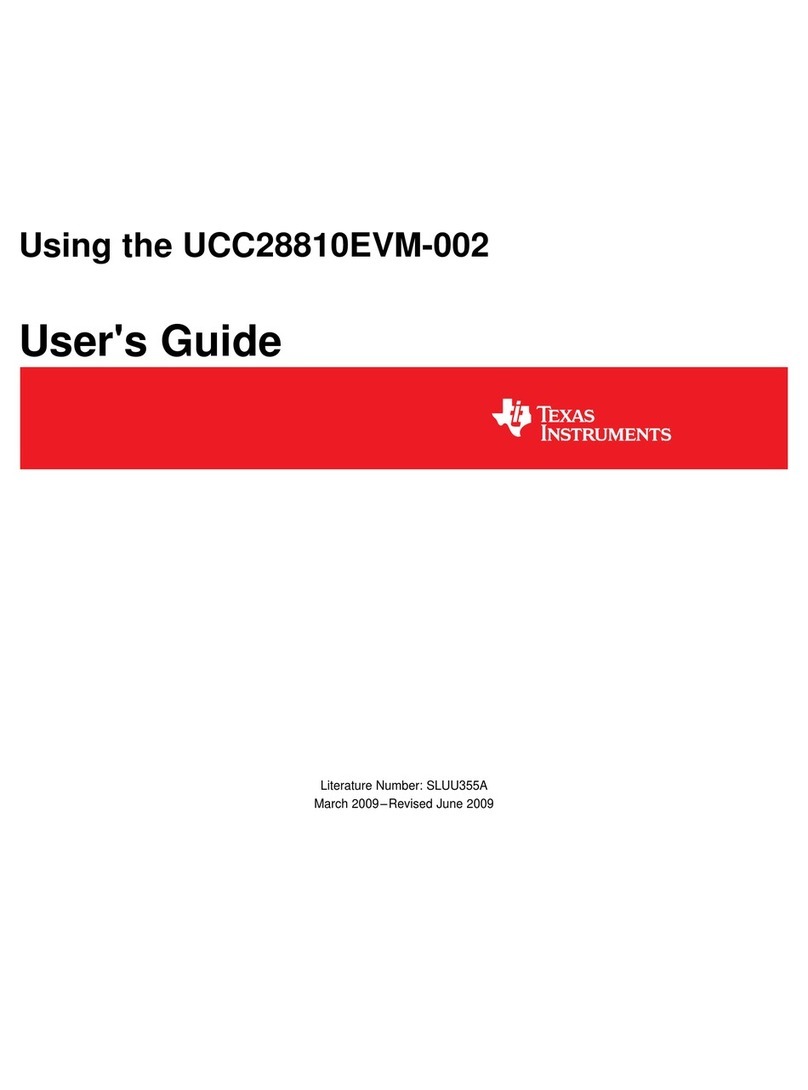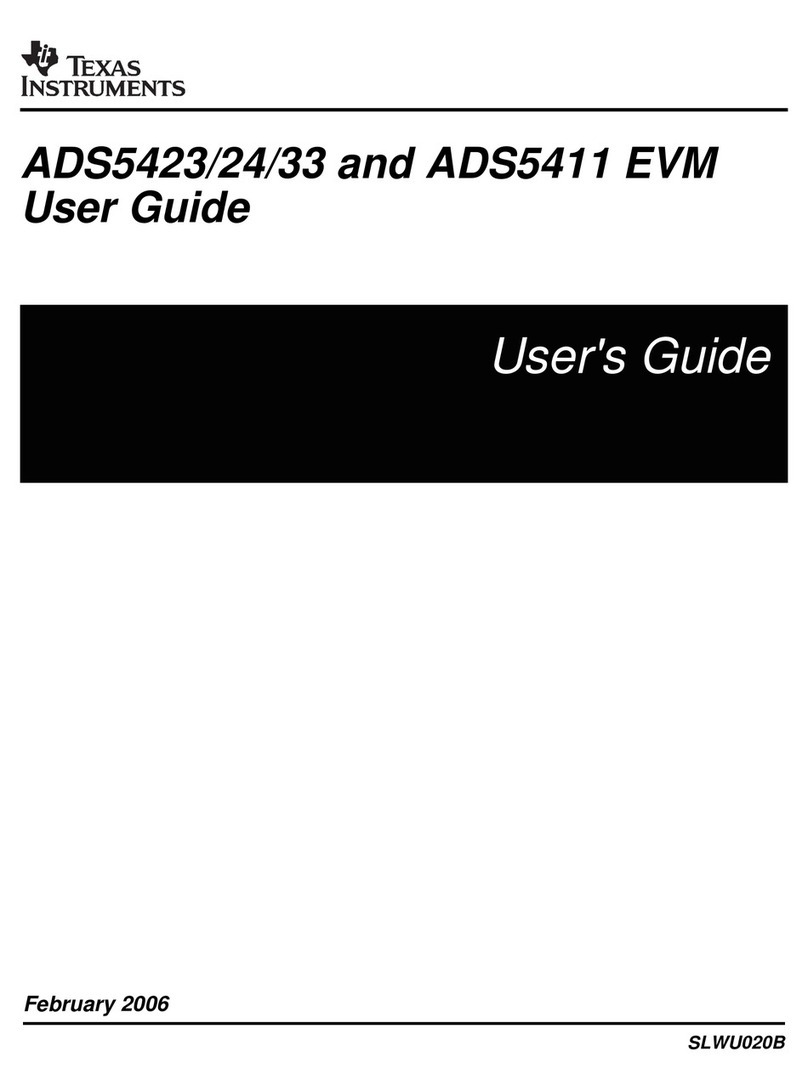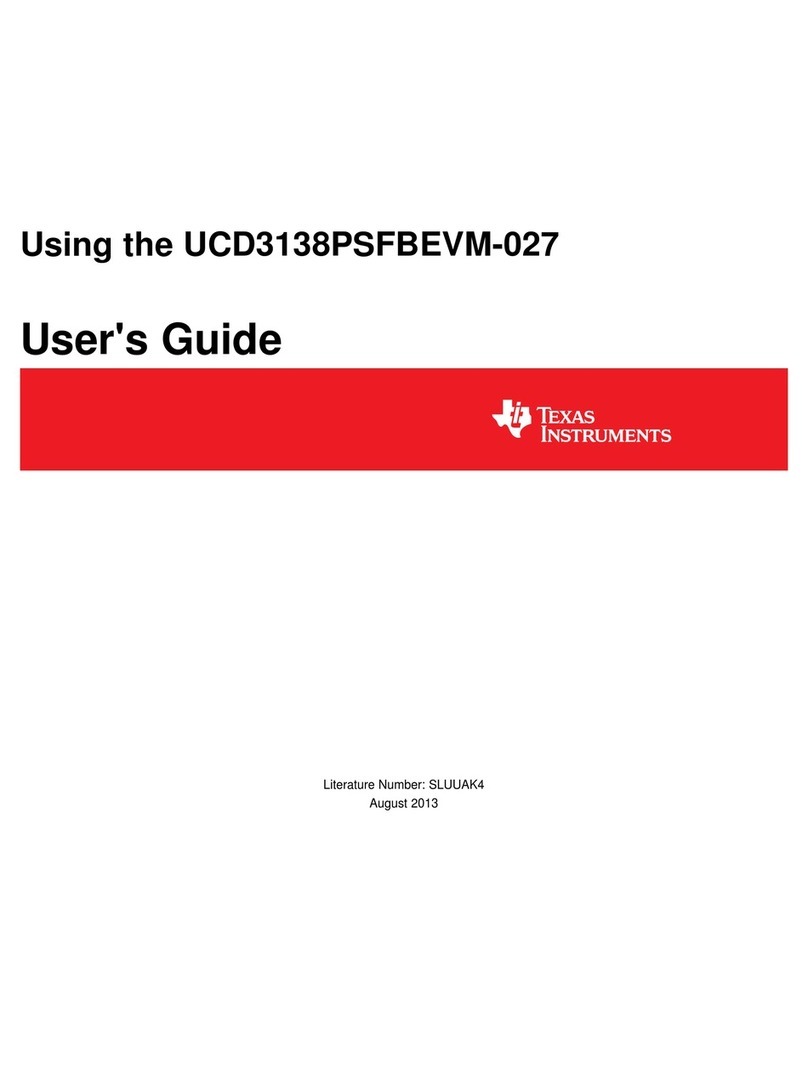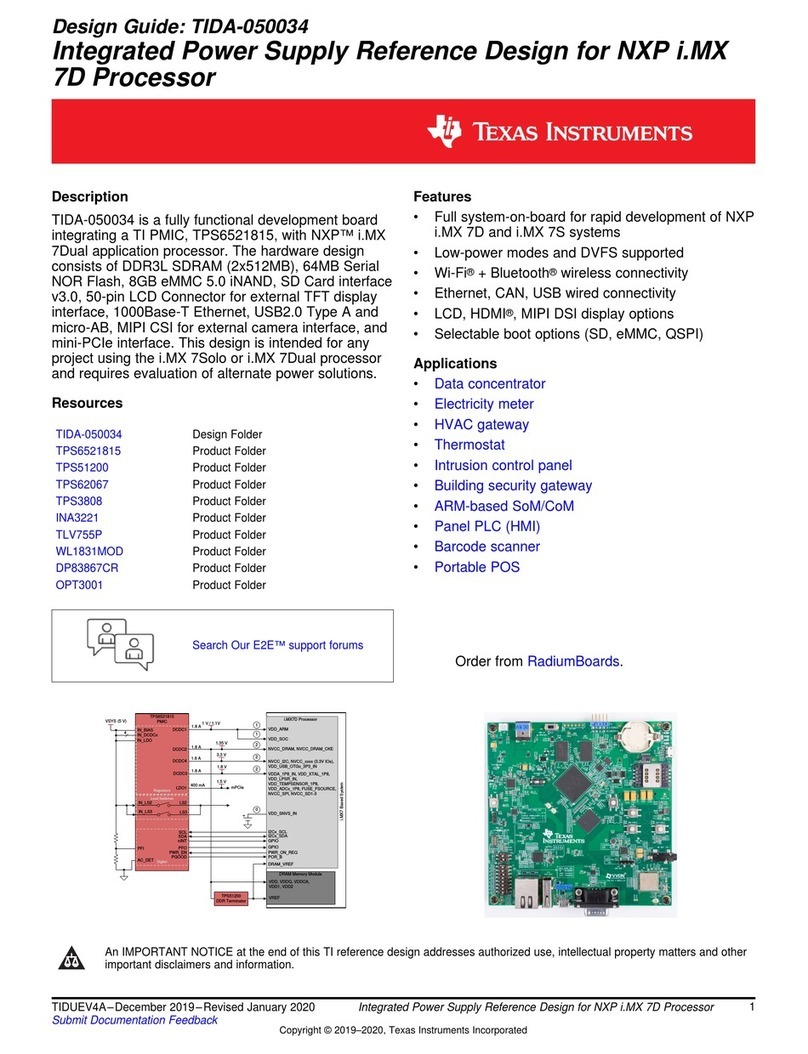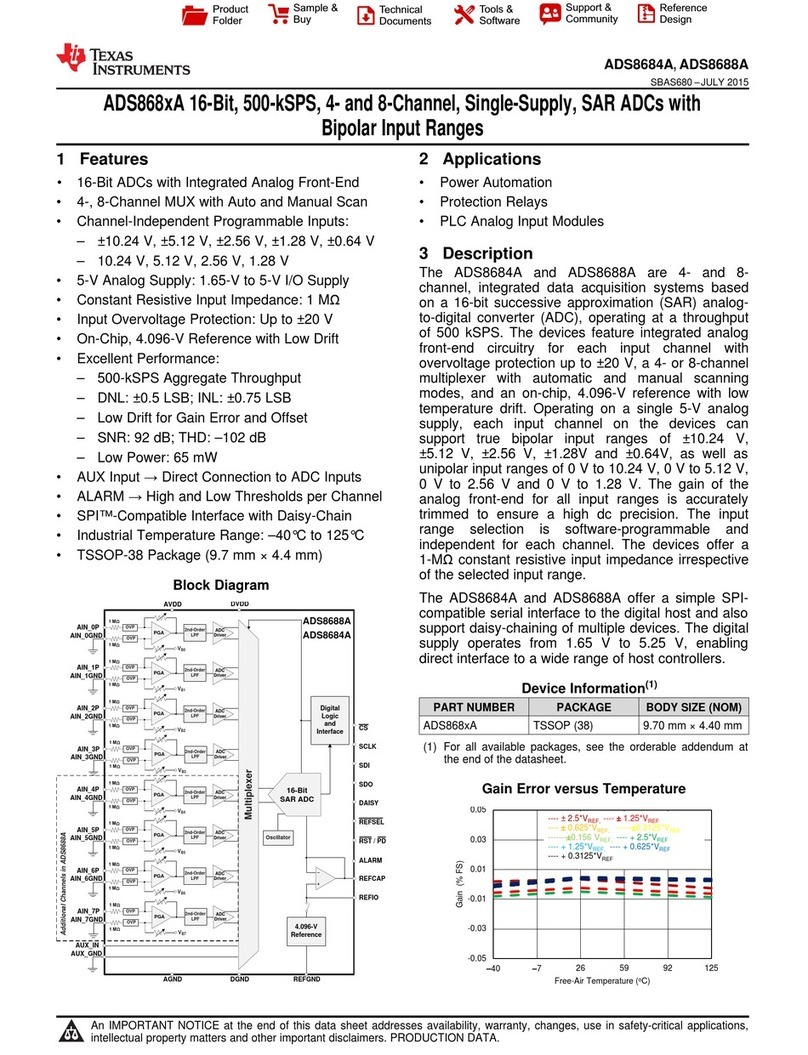
3 Circuit Description
3.1 Schematic Diagram
3.2 Circuit Function
3.2.1 Configuration Options
3.2.2 Power
Circuit Description
The schematic diagram for the EVM is in Section 5.3 of this document.
The following paragraphs describe the function of individual circuits. See the data sheet for completedevice operating characteristics.
The EVM provides a DIP switch, SW1, to control many of the modes of operation when the EVM isconfigured for parallel-mode operation. Table 1 describes the functionality of the DIP switches.
Note: When the device is configured for serial-mode operation (SW1, switch 8), the DIP settingson SW1, switch 1 through SW1, switch 7 are ignored.
Table 1. DIP Switch SW1
SW1 SWITCH
OFF ON DESCRIPTIONNUMBER
1 2s complement Offset binary Determines device output format2 LVDS CMOS Determines device output mode3 Reserved Reserved Reserved4 Internal reference External reference When set to External Reference, ADC uses common-modevoltage on TP1.5 Edge = 1 Edge = 2 Allows for output edge programmability6 Edge = 3 Edge = 4 Allows for output edge programmability7 Normal Power down Allows for power down8 Serial Parallel Determines mode for register interface
By switching SW1, switch 8 to OFF, the ADC operates in serial mode, using its programmed registercontents. A complete register map can be found in the device datasheet. Three pins on header J6 havebeen reserved for programming the device while it operates in serial mode. To program the deviceregisters using header J6, place SCLK on pin 21, SDATA on pin 23, and SEN on pin 25. A patterngenerator can be used to generate the patterns needed for programming. Alternatively, TI provides anoptional USB daughtercard that plugs into the expansion slot of the EVM. The USB daughtercard allowsADC register control via a software package loaded onto the PC.
Power is supplied to the EVM via banana jack sockets. The EVM offers the capability to supply analogand digital 3.3 V independently to the ADC. Table 2 offers a snapshot of the power-supply options. Allsupply connections are required for default operation, except J12, J10, J13, and J20.
The EVM provides local decoupling for the ADC; however, the ADC features internal decoupling, and inmany cases minimal external decoupling can be used without loss in performance. Users are encouragedto experiment to find the optimal amount of external decoupling required for their application. Figure 1shows the ADS5547 LVDS-mode performance with all of the decoupling capacitors installed and theperformance with C4, C5, C6, C7, C8, C9, and C10 removed. By default, the EVM comes with all of thedecoupling capacitors installed.
SLWU028B – January 2006 – Revised November 2006 7Submit Documentation Feedback
